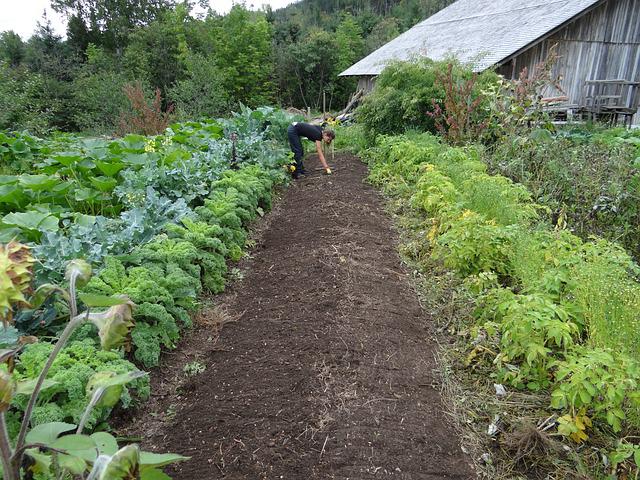At our homestead, we love eating fresh organic vegetables. We’ve been growing organically for a while and have some excellent tips and advice for growing a better organic garden.
 When you use proper techniques when organic gardening, you will tell from your harvest! It signifies that you have care for your plants and you desire good health for them. That is an admirable thing. As any other skill, your organic gardening skills will only grow with time and experience. This article will provide you with some ways to accomplish this.
When you use proper techniques when organic gardening, you will tell from your harvest! It signifies that you have care for your plants and you desire good health for them. That is an admirable thing. As any other skill, your organic gardening skills will only grow with time and experience. This article will provide you with some ways to accomplish this.
If you have any mildew on the plants, do not go out and buy anything. Try mixing a little liquid soap with some baking soda in water. Spray this mixture on your plants weekly until the mildew is gone. Baking soda will bring no damage to your plants, and will treat the mildew in a gentle and efficient manner.
It’s sometimes possible to save certain plants from winter cold by bringing them inside. You might want to transplant your most valuable varieties. Dig the plant up without damaging the roots and place it a big enough pot.
To get the best results in your garden, you need to use a good quality soil. Your soil may not be correct, but it depends on what sorts of plants you want to grow. It is also possible to create individual areas with one specific soil type.
In order for plants to grow, they must have enough CO2. When exposed to high levels of CO2, most types of plants will grow better. The best way to get higher CO2 for your plants is to grow them in a greenhouse. Make sure to keep CO2 levels high to provide the best growing environment for your plants.
When mowing your lawn, be careful not to cut the grass too far down. If you leave your grass kind of high, your roots will be deeper and your lawn will be stronger and not dry out. Short grass on the other hand is more susceptible to drying out.
Fresh mint is a wonderful addition to a herb garden, but it can quickly take over your entire yard. You can stunt the growth of mint by planting it inside a container or super-sized bowl. You can then plant the container down in the ground if you like, but the walls of the container will hold the roots captive, and keep the plant from taking over your garden!
If your gardening plans include pea plantings, try starting them off indoors rather than planting the raw seeds in outdoor beds. Planting them inside helps the seeds germinate better. They will also be stronger, and better equipped to resist disease and insects. Take the seedlings outdoors once they look strong enough.
Learn the proper way to handle chemicals, and the right way to use garden tools. If you ignore them, you can irritate your skin in most painful ways. Protect your plants and yourself by knowing how to correctly use all of your gardening implements.
Plant for fall color. Fall, though, can still be an interesting time for trees. the most colorful foliage appears in the fall. Maple trees are an autumn rainbow of crimsons to yellows, and so are beech and dogwood trees. There are practically as many types of shrubs chosen for their fall colors are there are gardeners! Barberry, hydrangea and cotoneaster are particularly popular choices.
You have the tools, the products, and the skill set to apply those tips to your organic garden. If you do not, you are on the right path to obtaining them. These tips were specifically crafted to enhance your organic gardening techniques. A gardener should never be done learning! You might even have learned something you hadn’t known before to use in your organic garden.




